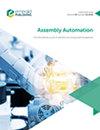移动边缘计算下自动驾驶汽车基础设施合作的资源优化管理与分配
IF 1.7
4区 计算机科学
Q3 AUTOMATION & CONTROL SYSTEMS
引用次数: 2
摘要
目的随着自动驾驶技术的不断发展和应用范围的扩大,车载设备的种类不断丰富,车载设备计算能力不断提高,相应的应用也越来越多样化。由于应用程序需要在车载设备上运行,对车载设备的计算能力要求越来越高。移动边缘计算是解决自动驾驶实际应用问题的有效方法之一。设计/方法论/方法在本研究中,根据实际需求,提出了一种移动边缘计算环境下自动驾驶汽车基础设施协作的最优资源管理分配方法,并在实际应用中进行了实验。研究结果提出了边缘计算中路侧单元模块的设计及其相应的实时操作系统任务协调,以及边缘计算负载集成和异构计算的方法。然后,提出了高并发计算任务的实时调度、自适应计算任务迁移方法和边缘服务器协同资源分配方法。测试结果表明,本研究提出的方法可以大大减少任务计算延迟,并且功耗通常随着任务大小和任务复杂度的增加而增加。结果表明,该方法在保证用户服务质量的同时,可以实现较低的功耗和较低的计算开销,具有良好的应用前景。本文章由计算机程序翻译,如有差异,请以英文原文为准。
Optimal resource management and allocation for autonomous-vehicle-infrastructure cooperation under mobile edge computing
Purpose
With the continuous technological development of automated driving and expansion of its application scope, the types of on-board equipment continue to be enriched and the computing capabilities of on-board equipment continue to increase and corresponding applications become more diverse. As the applications need to run on on-board equipment, the requirements for the computing capabilities of on-board equipment become higher. Mobile edge computing is one of the effective methods to solve practical application problems in automated driving.
Design/methodology/approach
In this study, in accordance with practical requirements, this paper proposed an optimal resource management allocation method of autonomous-vehicle-infrastructure cooperation in a mobile edge computing environment and conducted an experiment in practical application.
Findings
The design of the road-side unit module and its corresponding real-time operating system task coordination in edge computing are proposed in the study, as well as the method for edge computing load integration and heterogeneous computing. Then, the real-time scheduling of highly concurrent computation tasks, adaptive computation task migration method and edge server collaborative resource allocation method is proposed. Test results indicate that the method proposed in this study can greatly reduce the task computing delay, and the power consumption generally increases with the increase of task size and task complexity.
Originality/value
The results showed that the proposed method can achieve lower power consumption and lower computational overhead while ensuring the quality of service for users, indicating a great application prospect of the method.
求助全文
通过发布文献求助,成功后即可免费获取论文全文。
去求助
来源期刊

Assembly Automation
工程技术-工程:制造
CiteScore
4.30
自引率
14.30%
发文量
51
审稿时长
3.3 months
期刊介绍:
Assembly Automation publishes peer reviewed research articles, technology reviews and specially commissioned case studies. Each issue includes high quality content covering all aspects of assembly technology and automation, and reflecting the most interesting and strategically important research and development activities from around the world. Because of this, readers can stay at the very forefront of industry developments.
All research articles undergo rigorous double-blind peer review, and the journal’s policy of not publishing work that has only been tested in simulation means that only the very best and most practical research articles are included. This ensures that the material that is published has real relevance and value for commercial manufacturing and research organizations.
 求助内容:
求助内容: 应助结果提醒方式:
应助结果提醒方式:


